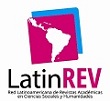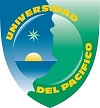Freshwater fish and aquatic ecosystem conservation of the lower rio Dagua, Buenaventura, Valle del Cauca, Colombia
DOI:
https://doi.org/10.47366/sabia.v4n1a9Keywords:
Rainforest, Aquatic ecosystems, Fish, ConservationAbstract
The Dagua river basin, a scenario with multiple environmental impacts, is of great importance as a key area for the conservation of the biodiversity of freshwater fish from the Colombian Pacific, which is why this research aimed to develop a descriptive study of the river ecosystem of the Dagua River. and its ichthyofauna, in order to recognize the ecological attributes that provide sustainable management tools for these resources. The investigation was carried out in the high and middle Dagua community council lands (CCAMDA), which is located in the middle and lower part of the Dagua River, near Buenaventura, Valle Colombia and presents several transitional ecosystems between rainforest and very humid at altitudes between 50 and 300 masl. The samplings were carried out during the months of February and March of 2010 in 15 streams and three stations on the main channel of the river through the method of rapid ecological evaluation, protocols were followed to analyze the data by stream (qualitative indexes and graphs) , for the study of fish distribution (Rodríguez-Olarte et al. model, 2006) and finally the environmental assessment of the sampling stations (preliminary model of Interpretation of Fluvial Conservation-ICF). There were 39 species of fish belonging to six orders and 19 families, whose data were discriminated by order, family and sampling station. The order with the highest number of species was Characiformes with 11 species, followed by Siluriformes and Perciformes with 10 species each., which represented 79.4%. It is concluded that the ecological simplification of the studied aquatic environments obeys, among others to the loss of habitats by activities associated with deforestation, with the consequent increase of sediments and erosion; In addition, contamination by wastewater and fuels, the modification of channels and habitats by mining, the construction of civil works and the demand of water for domestic, recreational and agricultural use, and it is recommended to extend this research to delve into the conservation plan of habitats and fish species of the region.
References
Castellanos Galindo, G. A.; Caicedo Pantoja, J. A.; Mejia Ladino, L. M.; Rubio, E. 2006. Peces marinos y estuarinos de Bahía Málaga, Valle del Cauca, Pacífico Colombiano. En: Biota Colombiana. Vol. 7, No 2 (2006); p. 263 – 282.
Castillo C. L. S. y Gonzalez A. M. 2007. Avances en la implementación del Plan de Acción en Biodiversidad del Valle del Cauca. Agenda de Investigación en Biodiversidad y vertebrados amenazados. CVC Dirección Técnica Ambiental. Santiago de Cali, Colombia. 66p.
Castillo, L. F. 1981. Cita bibliográfica de los peces de las principales cuencas hidrográficas del departamento del Chocó. Anexo breve inventario taxonómico de los peces del bajo San Juan. Universidad del Valle, Facultad de Ciencias. Santiago de Cali. Tesis (Biólogo). 955 p.
Castillo, L. F.; Rubio, E. 1987. Estudio de la ictiofauna de los esteros y partes bajas de los Ríos San Juan, Dagua y Calima, Departamento del Valle del Cauca. En: Cespedecia. Vol. 15 - 16, No. 53-54 - 55-56 (1987); p. 33 – 69.
Corporación autónoma regional del valle del cauca. 1996. Estudios Básicos para los lineamientos del ordenamiento territorial y manejo ambiental de la costa Pacifica: Recursos faunísticos, Pesca. Buenaventura : CVC. 44 p.
Dahl, G. 1960. New freshwater fishes from western Colombia. En: Caldasia. Vol. 8:39 (451–484).
Eigenmann, C. H. 1918. Eighteen new species of fishes from Northwestern South America. En: Proceeding American Philosophical Society. Vol. 56, No. 7: 673-689.
Eigenmann, C. H. 1914. New fishes from western Colombia, Ecuador, and Peru. En: Contribution Zoologycal Laboratory Indiana University. No. 133: Indiana University Studies. No. 19 (1914); p. 1-15.
Eigenmann, C. H. 1920. The fishes of the rivers draining the western slope of the cordillera Occidental of Colombia, Rios Atrato, San Juan, Dagua, and Patía. En: Indiana University Studies. Vol. 7 (1920); p. 1-20.
Eigenmann, C. H. 1922. The fishes of Western South América, Part I. The freshwater fishes of northwestern South América. Including Colombia, Panamá, and the Pacific slopes of Ecuador and Perú, together with an appendix upon the fishes of the Rio Meta in Colombia. En: Memoirs of the Carnegie Museum. Vol.9, No.1 (1922); p. 1-346.
Fowler, H. W. 1944. Freshwater fishes from northwestern Colombia. En: Proceeding of the Academic of Natural Sciences of Philadelphia. Vol. 96 (1944); p. 227 – 248.
Ortega Lara, A.; Lehmann, P. 2006. Cruciglanis A new genus of Pseudopimelodid, catfish (Ostariophysi: Siluriformes) with description of a new species from the Colombian Pacific coast. En: Neotropical Ichthyolgy. Vol. 4, No. 2 (2006); p. 147 -156.
Ortega Lara, A.; Usma J. S. 2001. Composición y estructura comunitaria de los peces del río Cubarradó, cuencas del río Purrichá, Chocó. En: Cespedecia. Vol. 24, No. 75 - 76 - 77- 78 (2001); p. 27 – 37.
Ospina, C. y Restrepo, C. A. 1989. Contribución al conocimiento de la Biología de los peces del bajo Anchicayá. Tesis de grado (zootecnista). Universidad Nacional de Colombia. Facultad de Ciencias Agropecuarias-Palmira. 241 p.
Regan, T. The fishes of the Condoto river, Colombia. Annals Magazine. Natural History. London, 8 (14). p. 31 – 33.
Regan, T. 1913. The fishes of the San Juan river, Colombia. En: Annals Magazine. Natural History. London. Vol. 8, No. 12 (1913); p. 462 – 473.
Sánchez Garcés, G. C.; Ortega Lara, A.; Valencia, O. 2006. Caracterización de la ictiofauna en la cuenca baja de los ríos San Cipriano y Escalerete, Pacífico Vallecaucano. Santiago de Cali : Universidad Autónoma de Occidente. 2006. 119 p.
Usma, J. S. 1996. Estudio preliminar de la ictiofauna nativa del río Escalerete. En: Cespedesia. Vol. 21 No. 68 (1996); p. 41-55.
Downloads
Published
How to Cite
Issue
Section
License
Copyright (c) 2018 Sabia Magazine

This work is licensed under a Creative Commons Attribution-NonCommercial-ShareAlike 4.0 International License.
















